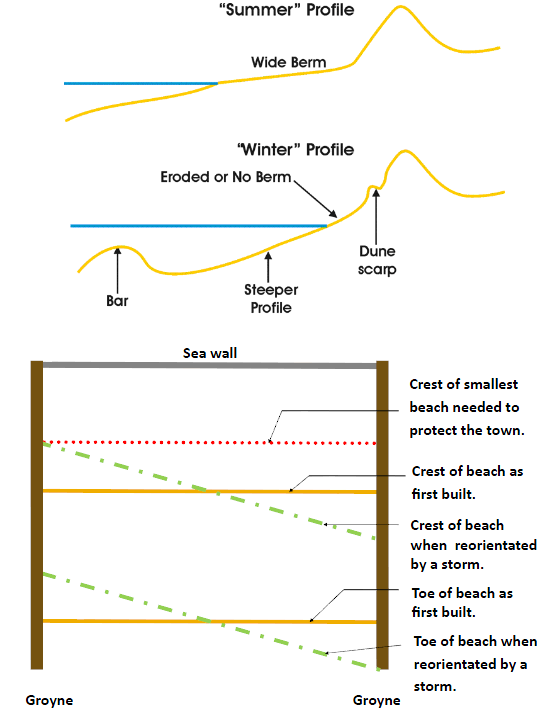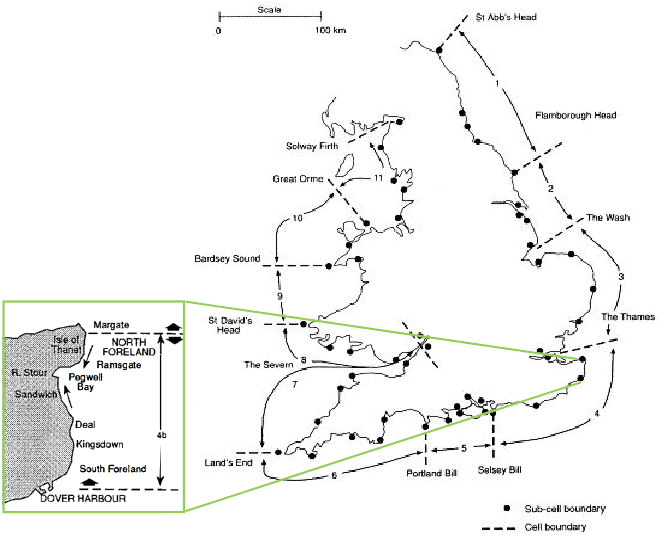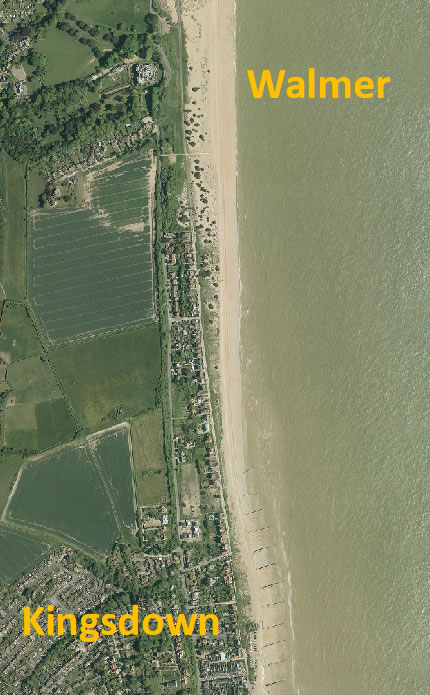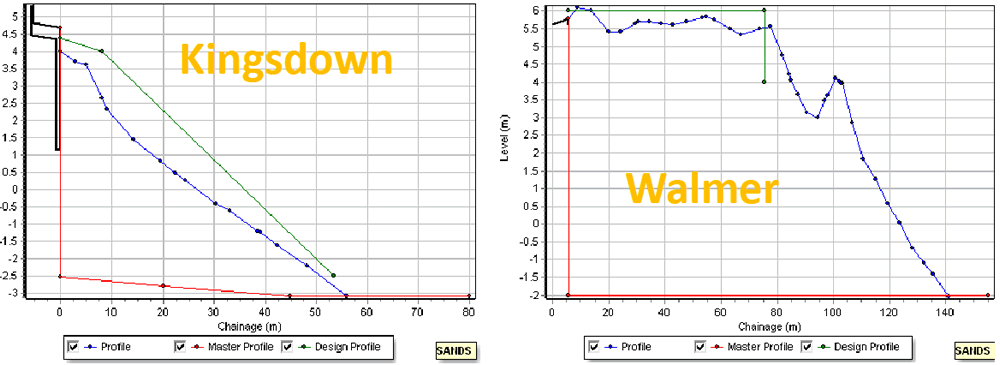Beach Recycling

The beach is, arguably, the most essential part of the works and its maintenance will be a long term operation. We want the scheme to be as sustainable, i.e. meeting this generation's needs (without compromising the needs of future generations) as possible and that means thinking about where we source our beach material. In the past, material dredged from limited offshore deposits was solely used for replenishment. A different approach, championed by Canterbury City Council along the North Kent coast, is being adopted.
Beach Mechanics
The beach provides the first line of defence against the sea at Kingsdown. The angle of the slope and the dissipating effect of the shingle reduce the destructive power of the waves. During storms, when waves are at their greatest, the beach shape changes as shingle is moved seawards and the berm of the beach is eroded.
This “winter” profile is clearly visible on most shingle beaches between November to February; as summer arrives smaller waves help build up the beach again, creating a “summer” profile. Because the beach has groynes, lateral reorientation also occurs during storms. This can greatly reduce the effectiveness of the beach at dissipating the wave’s energy.
To protect the town, the beach has to be made bigger than is absolutely necessary because we want to make sure there is still enough beach left in place when it undergoes reorientation during storms. The new groynes need to be big enough to contain the beach after reorientation. The closer together groynes are, the more effective they are at retaining the beach.

 To calculate how much shingle we need to put on the beach we look at both the long term average shingle loss together with some extreme rates of erosion which have taken place. The strategic monitoring team’s beach level data provides us with this information. They have over 12 years of beach level data from which we can pick out the worst case scenarios.
To calculate how much shingle we need to put on the beach we look at both the long term average shingle loss together with some extreme rates of erosion which have taken place. The strategic monitoring team’s beach level data provides us with this information. They have over 12 years of beach level data from which we can pick out the worst case scenarios.
The coastline is a dynamic environment, yet studies have shown that the movement of shingle around our coasts is limited to what we call “sediment cells”. These huge areas mark the boundaries where what goes on in one cell would not affect its neighbour. Boundaries occur in two forms: sediment sinks or divergent, where a sharp change in the direction of the coast causes beach material to move away in both directions.
For a successful beach recharge, it is necessary to match the new shingle to that which was there originally.
At Kingsdown, the predominant drift direction is south to north. In 1847 the natural shingle cell was interrupted by the construction of the massive outer harbour wall at Dover. This created a new sub boundary.
Since then Kingsdown has been starved of shingle as its natural supply had been cut off.
Because we know that the shingle lost from Kingsdown is moving northwards and is not being lost offshore, it is possible to reclaim that material and put it back on Kingsdown beach. The Strategic Monitoring Programme measures beach profiles around the whole of the coast so we can see where it accumulates.
We have chosen to undertake annual recycling of shingle from Walmer Castle to Kingsdown. Because the material is originally from Kingsdown, it is the perfect size for feeding the beach with.
The beach at Kingsdown is visibly smaller than near Walmer Castle from Aerial Photography. The beach profiles really show us how much they differ: a profile at Kingsdown has a cross sectional area 166 m2 in comparison to Walmer at 790 m2.

Full Menu
Contact
Liam Wooltorton, Canterbury City Council: Tel: 01227 862454, email liam.wooltorton@canterbury.gov.uk
or
Keith Watson, Dover District Council: Tel: 01304 872399, email keith.watson@dover.gov.uk